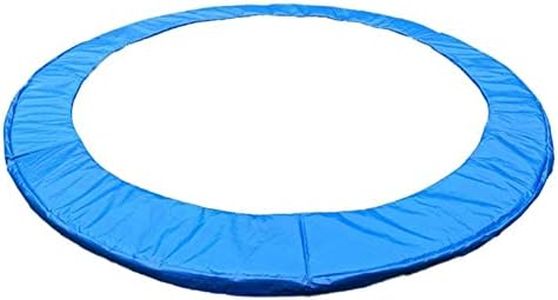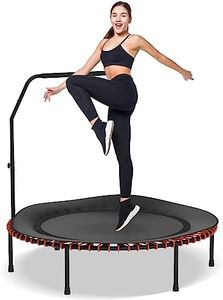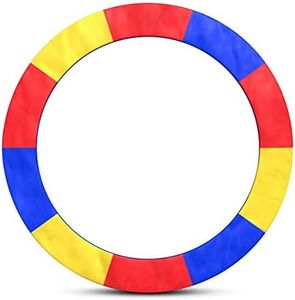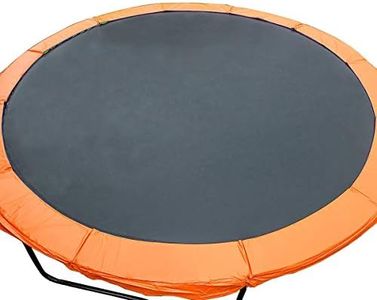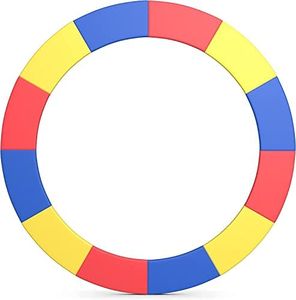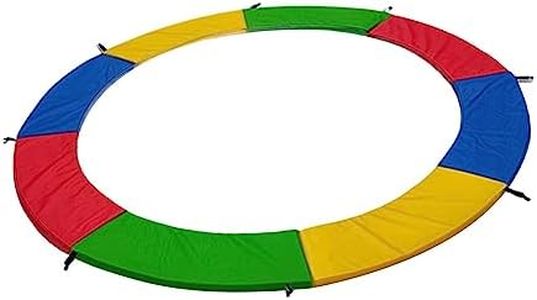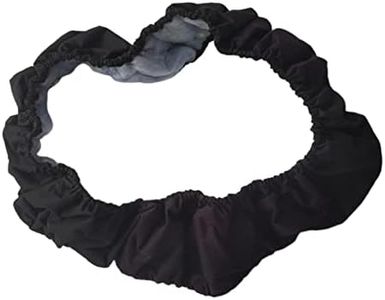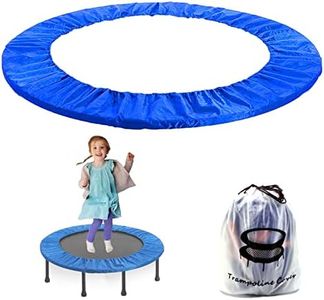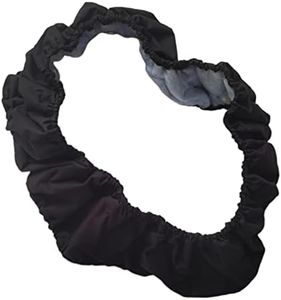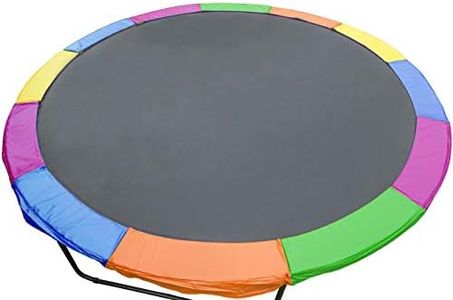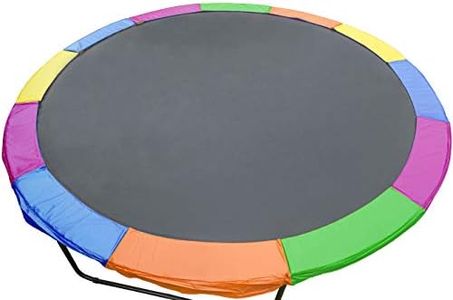We Use CookiesWe use cookies to enhance the security, performance,
functionality and for analytical and promotional activities. By continuing to browse this site you
are agreeing to our privacy policy
10 Best Trampoline Pads
From leading brands and best sellers available on the web.Buying Guide for the Best Trampoline Pads
Choosing the right trampoline pad is essential for safety and enjoyment. The pad covers the trampoline springs, which shields jumpers from accidental contact with the hard and sometimes sharp metal. A good pad not only prevents injuries but also adds to the overall durability and lifespan of your trampoline. When you start looking for trampoline pads, focus on your trampoline's size and shape, but also consider the quality and weather resistance of the pad material. You want a pad that fits snugly, stays secure, and holds up to regular outdoor use.Pad ThicknessThe thickness of a trampoline pad refers to how much cushioning it will provide over the springs. Thicker pads generally offer more protection, which is especially important for households with younger children or those who jump often. Typical pad thickness ranges from about half an inch to more than one inch. Thinner pads may be more affordable, but risk exposing jumpers to hard metal if compressed. For general family use or frequent jumping, a pad at least one inch thick is recommended, while light or occasional use might be fine with something thinner.
Pad WidthThe width of the pad determines how much area it covers over the trampoline springs and frame. A wider pad means more coverage and protection. Pad widths usually range between 8 to 12 inches, but this can vary. It's important that your pad is wide enough to completely cover the springs, so measure your trampoline carefully. For wider springs or frames, a wider pad is essential. For small or medium trampolines, a standard width usually suffices, but do a quick measure to be sure.
Material QualityTrampoline pads are typically made from PVC, PE, or similar synthetic materials. The material quality impacts the pad's durability, water resistance, and ability to withstand exposure to sunlight. Higher quality materials like UV-resistant PVC are less likely to fade or crack, ensuring safer use over several seasons. If you live in an area with lots of sun or rain, or if your trampoline will be outside year-round, prioritize pads labeled as weather- or UV-resistant.
Attachment MethodThe way a trampoline pad attaches to the trampoline frame affects how secure it stays during vigorous jumping or in windy conditions. Pads typically use straps, ties, or elastic bands. Strong, well-positioned attachments prevent the pad from shifting or blowing away, keeping users safe. If younger children will be using the trampoline or if you live in a windy area, choose a pad with secure attachment options like reinforced straps with buckles.
Size and Shape CompatibilityPads need to match the size and shape of your trampoline—round, rectangular, oval, or square. Using the wrong size or shape can leave parts of the springs or frame exposed, creating a safety hazard. Always measure your trampoline's diameter (for round models) or length and width (for rectangular/oval models) before purchasing. Pick a pad that matches both the shape and measurements exactly for the best fit and coverage.
